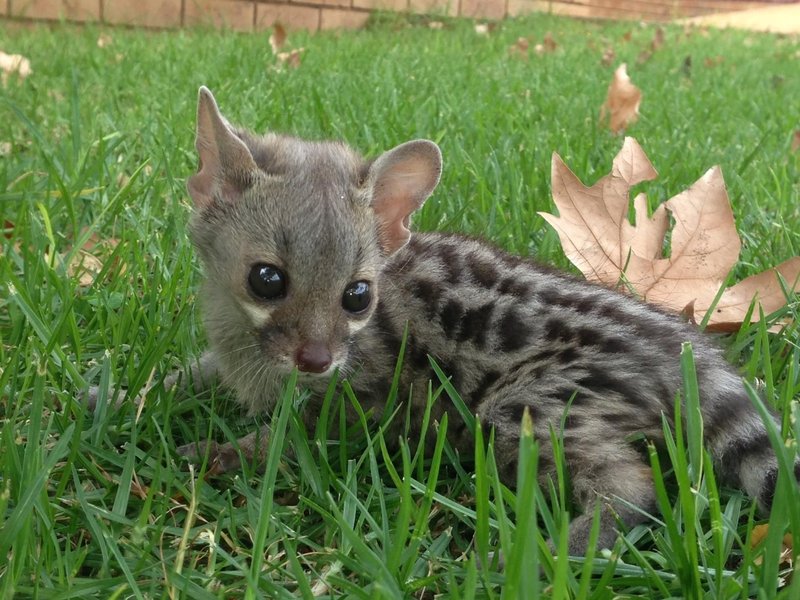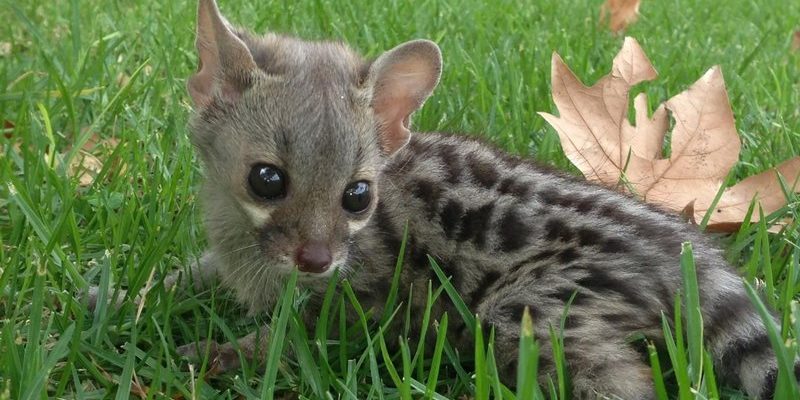
Imagine you’re sipping a cup of coffee with a friend who’s just as curious about animals as you are. Maybe you’ve heard someone say genets are just another type of cat or that they make great pets. You might nod along, but the reality is often more complex. Understanding what genets really are can help us appreciate these unique creatures and separate fact from fiction. So, grab your favorite mug and let’s explore the many misconceptions about genets together!
Myth 1: Genets Are Just Small Cats
One of the most common misconceptions about genets is that they’re a type of cat. Honestly, this makes a bit of sense at first glance—they share some physical similarities. But here’s the thing: genets are part of the family Viverridae, which makes them more closely related to civets and mongooses than to domestic cats.
Genets have long, slender bodies, pointed snouts, and a long, bushy tail that helps them balance as they navigate trees. Their unique appearance can certainly lead to confusion. Unlike cats, genets have retractable claws and their diet includes a mix of fruits, insects, and small rodents. Understanding this difference is crucial if you’re considering them for companionship or if you simply want to know more about them.
Furthermore, their behavior is quite distinct from a typical house cat. Genets are more active at dusk and dawn, making them crepuscular, while cats can be more flexible with their schedules. So, while they may look like your furry friend at home, remember that genets are a whole different ballgame!
Myth 2: Genets Make Great Pets
You might be wondering if genets would be suitable companions, similar to dogs or cats. The idea of having a genet as a pet might sound appealing—after all, they’re adorable little creatures! However, having a genet isn’t as easy as it sounds.
Genets require a specialized diet and habitat to thrive. Unlike domesticated pets, they possess wild instincts that can pose challenges. They’re active, playful, and love to climb, which means you’ll need a large space and plenty of enrichment to keep them happy. Think of it like having a small child who needs constant supervision. If you’re not able to provide that kind of environment, you could run into trouble.
Also, keep in mind that genets can be quite skittish and may not take to human interaction the way more social pets do. They have specific needs for socialization and handling, which can be overwhelming for new owners. If you’re looking for a cuddly pet that enjoys being held, a genet might not be the best choice for you.
Myth 3: Genets Are Easy to Care For
Imagine thinking you can just bring a genet home and treat it like a cat. Unfortunately, that’s a big misconception! Caring for a genet is a commitment that requires extensive knowledge and preparation.
First off, their dietary needs are different from what you’d find in a typical pet store. Genets thrive on a mix of proteins, fruits, and specially formulated cat food. You can’t just toss them a bowl of kibble and expect them to be happy. Taking time to understand what they need can save you from health problems down the road.
Additionally, genets need space to roam and play. If you want one, consider setting up an enclosed area or even a custom-built habitat. Think of it like creating a mini jungle gym! This helps keep them engaged and fulfills their natural instincts to climb and explore.
Myth 4: Genets Are Nocturnal Creatures
Many people assume that genets are purely nocturnal, much like owls or some rodents. While it’s true that they are active at night, they are actually crepuscular, meaning they are most lively during the twilight hours of dawn and dusk.
This behavior is vital to their survival in the wild. The cooler temperatures of these times help them hunt for food and stay hidden from predators. If you’re considering a genet, you’d need to adjust your schedule accordingly since you might find your little friend bouncing around when you’re winding down for the night.
In this case, knowing about their natural activity patterns can help you provide a better environment. Make sure to offer plenty of stimulation during those hours, such as toys and climbing structures, to keep them entertained.
Myth 5: Genets Are Similar to Ferrets
The cute, elongated bodies of genets might remind you of ferrets, leading many to think they’re cut from the same cloth—but that’s not quite accurate. While both species share a slender frame, they belong to different families altogether.
Ferrets are domesticated and part of the family Mustelidae, which includes weasels and otters. They have a completely different behavioral and dietary profile compared to genets. Ferrets are known for their friendly and playful nature, while genets can be more reserved and wild.
That said, both animals need ample attention and interaction. However, if you’re choosing between the two as pets, consider their vastly different needs and temperaments. Each has its own quirks and charm, but they’re definitely not interchangeable.
Myth 6: Genets Are Not Endangered
A surprising number of people believe that genets are thriving in the wild without any concerns. However, several species of genets are facing threats due to habitat destruction and hunting. Issues like deforestation and urban expansion are pushing these creatures into smaller, less suitable environments.
As we take a closer look at wildlife conservation, it’s essential to recognize that genets, just like many other animals, need our attention and support. Their play a critical role in the ecosystem, helping control pest populations.
By understanding their status in the wild, we can advocate for better conservation efforts. Spreading awareness about their plight is just one way to lend a hand. So, the next time someone mentions genets, share with them the importance of preserving their habitats!
Myth 7: All Genets Are the Same
Lastly, let’s talk about the misconception that all genets are identical. Just like you wouldn’t mix up different breeds of dogs, it’s crucial to know there are various species of genets, each with unique traits and behaviors.
For example, the Common Genet is known for its adaptability to various habitats, while the Servaline Genet prefers denser forests and has a more striking coat pattern. Each species has different dietary requirements, social behaviors, and living conditions.
If you’re learning about genets, take time to explore the specifics of each type. Doing so can deepen your appreciation for these creatures and how they fit into the larger picture of biodiversity.
In closing, it’s easy to get mixed up with all the myths and misconceptions about genets. From their care needs to their wild nature, understanding the truth about these animals helps us appreciate them more. Whether you’re just interested in nature or considering adding a genet to your life, remember: knowledge is key. By learning more, you’ll be prepared for whatever comes next, just like a well-prepared explorer in the wild!

